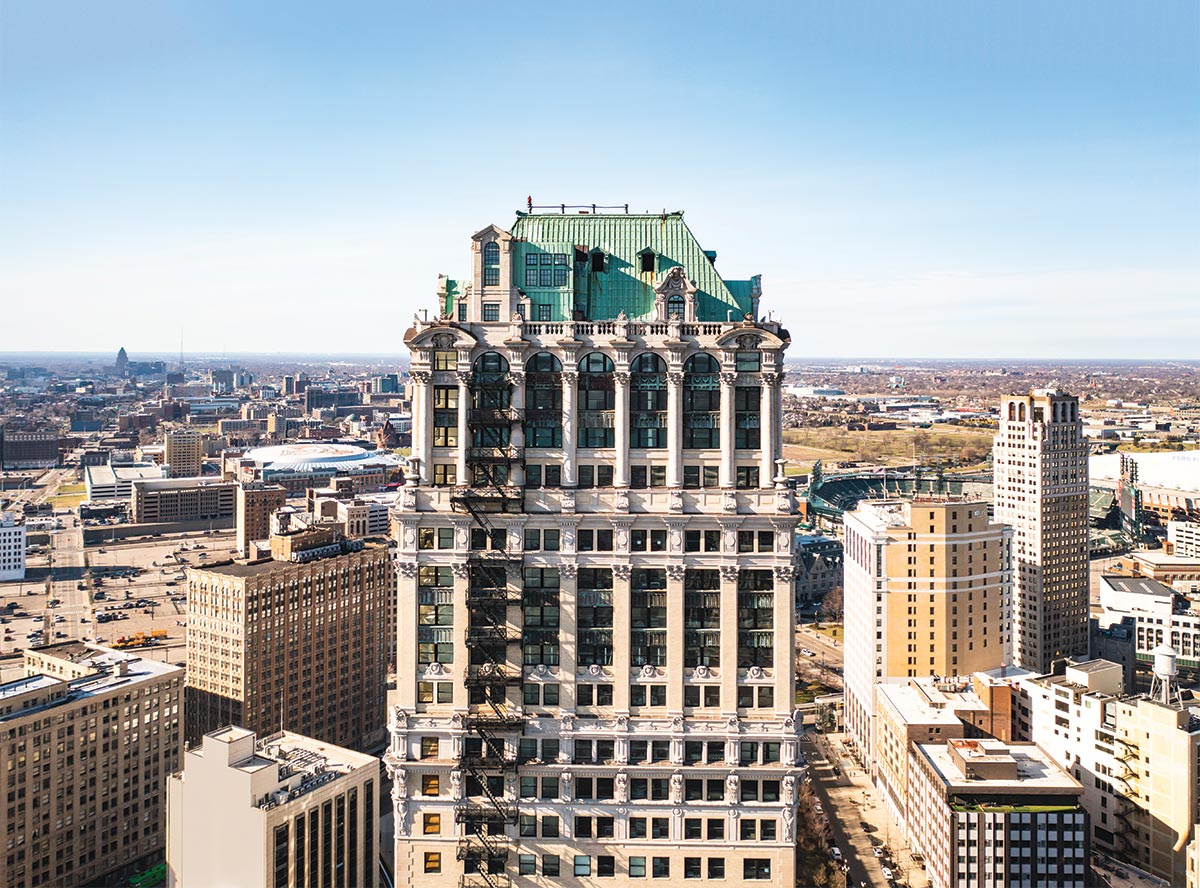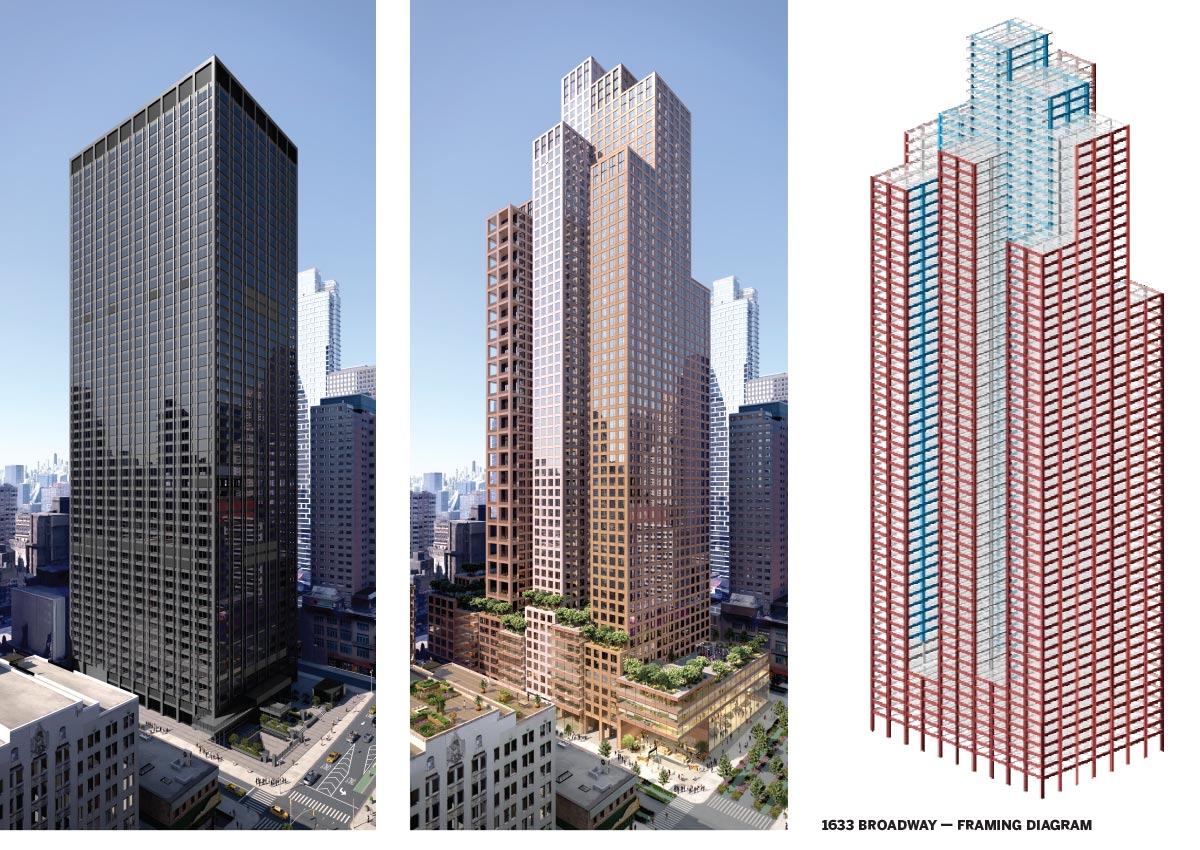Office Conversions
Learning Objectives:
- Discuss the economic, environmental, and social arguments for converting vacant office buildings into housing.
- Describe different office-building typologies and discuss the conversion challenges they pose.
- Discuss structural retrofit measures that may be required to convert an office building into housing.
- Outline code, zoning, and other regulatory changes that could hasten transformation of vacant office towers into housing.
Credits:
This course is approved as a Structured Course
This course can be self-reported to the AANB, as per their CE Guidelines
Approved for structured learning
Approved for Core Learning
This course can be self-reported to the NLAA
Course may qualify for Learning Hours with NWTAA
Course eligible for OAA Learning Hours
This course is approved as a core course
This course can be self-reported for Learning Units to the Architectural Institute of British Columbia
View course on architecturalrecord.com »
With hybrid and remote work schedules leaving millions of square feet of empty office space, “private owners are suffering,” says Eran Chen, a founder of the New York architecture firm ODA. “They may lose buildings to their banks; cities are losing real estate tax dollars,” he adds. “And nobody likes an empty office district.”

PHOTOGRAPHY: COURTESY BEDROCK
The Book Tower in Detroit has a generous number of windows, making ODA’s conversion of the 1927 office tower into apartments (below) and hotel rooms relatively straightforward.

PHOTOGRAPHY: COURTESY BEDROCK
Given the urgency of filling all the empty space, converting offices to residential use is seen as a twofer: making obsolete buildings useful again and allaying a national shortage of housing. Also, conversions can put units online quicker than new construction. Downtowns diversified by housing—and supplied with ample cultural and recreational amenities—draw more people. They extend 9-to-5 commercial monocultures to 18-hour “live/work/play destinations,” in real-estate shorthand.
Some architects advocate office-to-residential conversions as a climate-responsible solution, taking advantage of transit-rich neighborhoods and conserving the substantial embodied carbon of existing buildings, compared to new construction. (Estimates vary widely, but a building’s frame and its foundations alone can account for 30 percent of a building’s embodied carbon.) As SOM Adaptive Reuse Practice leader Frank Mahan puts it, “With a stagnant office market, a housing shortage, and climate change, we could address all three existential crises of our time at once.”
Several European countries and cities have regulations aimed at reducing emissions from building materials. In London, for instance, a requirement for building life cycle assessments of carbon intensity is tilting the playing field toward retaining and adapting buildings “because you have to compare the carbon footprint of the existing building to what you would build new,” explains Russell Fortmeyer, global sustainability leader for architecture firm Woods Bagot. In the U.S., Fortmeyer points to California’s recently instituted code limits for embodied carbon which apply to the construction and renovation of commercial buildings larger than 100,000 square feet. He maintains that the new regulations could make conversion the more affordable path, since project teams opting to build new will be competing for the limited supply of low-carbon materials, such as mass timber or green concrete, and thus paying a premium.
Though opportunistic politicians have harmfully vilified downtowns in older cities as hotbeds of crime and violence, the appeal of in-city living is largely undimmed, with many metro areas luring back those who left during the pandemic. Philadelphia has seen most of its housing growth in recent years in the downtown core and surrounding neighborhoods, according to Paul Levy, president and CEO of the Center City District, a business-improvement organization, and his city is hardly alone.
Office building conversions are not new, of course. However, a widely expected boom in such projects post-pandemic has not yet materialized, even as large-scale remote work persists. It turns out that the volatile financial and regulatory environment has made developers skittish. Conversions that could alleviate the dire shortage of affordable housing in the U.S. are even more daunting. These factors not only affect the viability of projects but also architectural approaches to them, as well as technological tactics.
Higher construction costs and interest rates—and uncertainty over where these are headed—make projects riskier and developers reluctant. “Everyone’s waiting for incentives,” says Adam Yarinsky, principal at Architecture Research Office (ARO), which can include some combination of tax abatements, relaxed building codes, and zoning bonuses. A 10-year tax abatement and a mixed-use zoning district have been in place in Philadelphia since 1996. “It has led to the conversion of 180 buildings of all sizes to residential use, including 9 million square feet of office space,” explains Levy, of the Center City District. After the 9/11 terror attacks, New York incentivized dozens of conversions of buildings in Lower Manhattan that had long languished. The current mayor, Eric Adams, hopes to bring such incentives to additional parts of the city that have underused office buildings, but so far these efforts have been thwarted by the need for state legislation that would enable them.

IMAGES: COURTESY © SOM

IMAGES: COURTESY © SOM
CONVERSION CANDIDATES
Some kinds of office structures are easier to adapt than others. Since the late 1980s, many modest commercial buildings from the late 19th and early 20th centuries have been handsomely converted to residential use. These loft-style structures were built to be flexible, accommodating offices, wholesalers, and small industrial uses, and therefore often come with high ceilings, regular (if column-studded) floor plans, and tall windows.
Slim early 20th-century towers, many among the most famous buildings in their cities, have also proved desirable for residential conversion, particularly at the higher end of the market. Their shallow exterior wall-to-core distance and high ceilings bathe their interiors in daylight from windows that are often appealingly oversize. The $400 million transformation of the long-abandoned 1926 Book Tower in Detroit (Louis Kamper, original architect) into a combination of hotel rooms and rental apartments was “a simple conversion,” says ODA’s Chen, since the floor plates matched a residential-building depth, and it had an ample number of windows. In addition to designing the apartment layouts, his firm restored the exterior and extensively renovated a spectacular domed and vaulted art-glass lobby ceiling.

COURTESY © SOM/MIYSIS
For an early 1970s office building in New York’s Times Square, SOM has proposed removing building volume and stacking it to create a stepped tower. Strategically stiffening the frame would limit drift.
In New York, recent conversions of early 20th-century towers include such trophy properties as Cass Gilbert’s Woolworth Building (1912), and the 1932 headquarters of Irving Trust, designed by Voorhees, Gmelin and Walker, with its elegantly slender silhouette and its restrained fluted-limestone surface. Frank Woolworth had dubbed his 792-foot tower, for a time the tallest building in the world, “the Cathedral of Commerce,” but in 2018, the late Thierry W. Despont, with SLCE Architects, converted its top 26 floors into 33 luxury apartments. The design team also fit a six-level penthouse within the building’s copper-clad pyramid-shaped roof. The lower 29 stories remain in use as offices.
The recently completed luxury conversion of Irving Trust, now called One Wall Street, was designed by an extensive team that included SLCE, MdeAS Architects, Ashe Leandro, and Deborah Berke Partners (now TenBerke) for Macklowe Properties. According to MdeAS principal, Dan Shannon, One Wall Street’s proportion of wall surface to oversize windows eased the task of laying out the apartments. (High-performance replacement windows were curved to match the fluting as the originals did.) Freestanding, it opens to views on all sides. “The quality of the architecture is part of the attraction, for people who don’t want cookie-cutter design,” he says.















